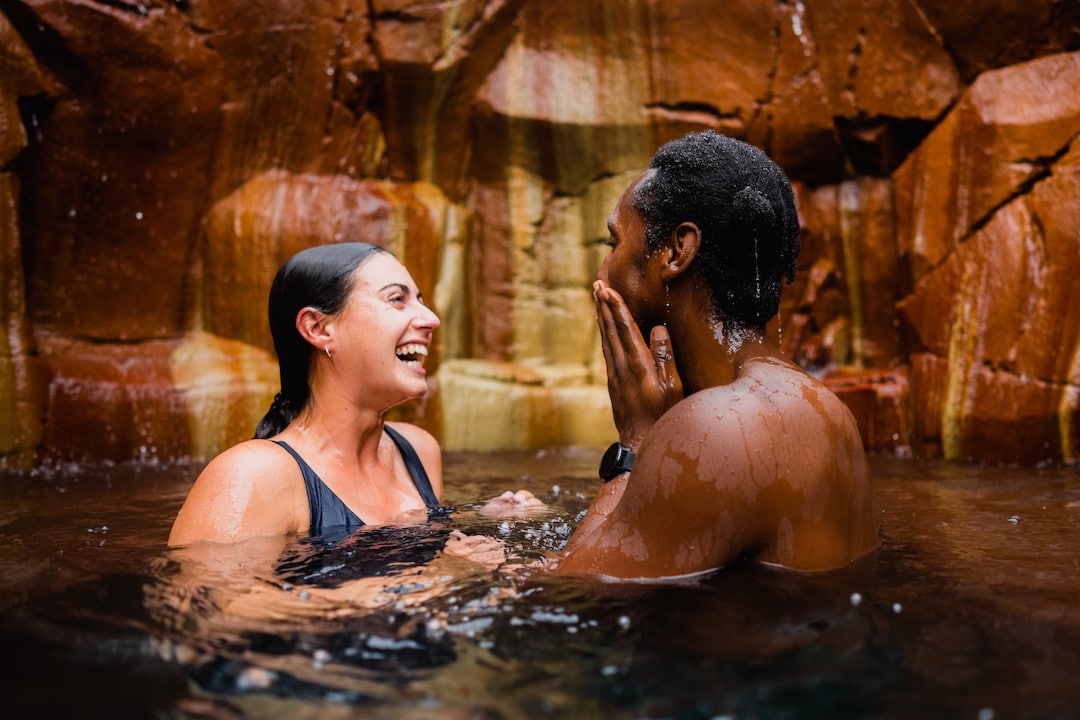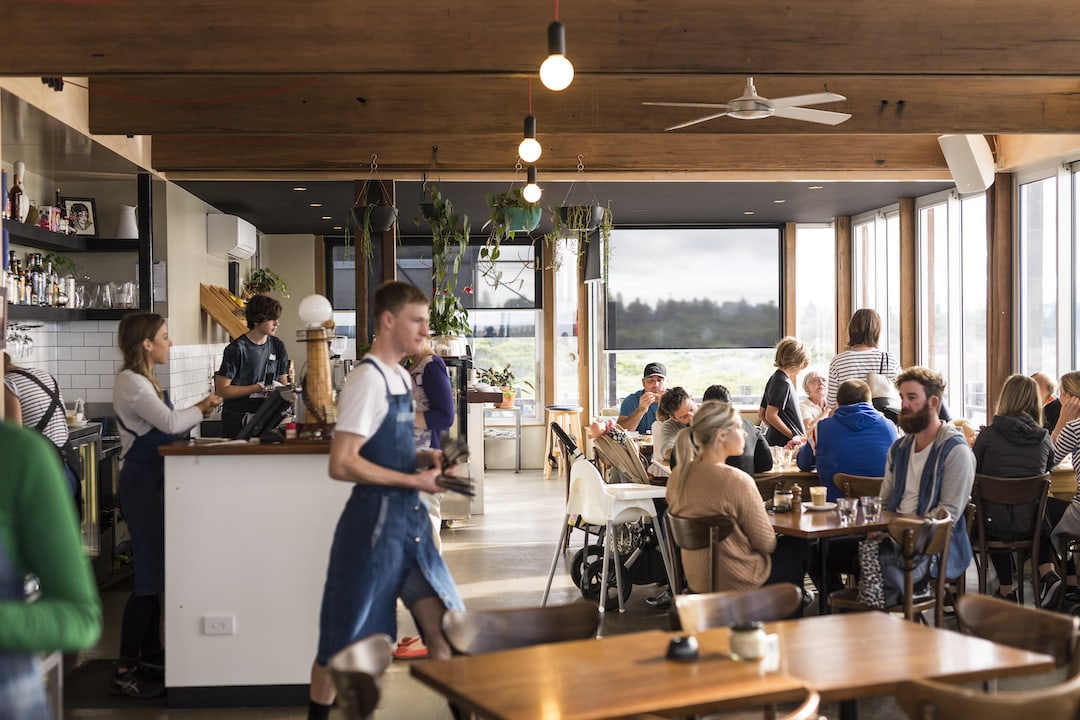Drive Victoria’s Shipwreck Coast to discover the oft-tragic history of this spectacular coastline on the shores of Bass Strait and the Southern Ocean.
Victoria’s Great Ocean Road with its famed limestone stacks and sweeping beaches is the poster child for the striking Shipwreck Coast. With the Cape Otway Lighthouse guiding mariners safely since 1848, today, most travellers arrive by road. The coast-hugging Great Ocean Road, lined by lush greenery on one side and the Southern Ocean on the other, lures more than six million visitors each year.
Most make a beeline for the coastal towns of Apollo Bay and Warrnambool. With no shortage of forest and ocean-filtered air to cleanse the lungs and refresh the spirit, both towns are well positioned for the soul-cleansing goodness that comes from a coastal escapade.

Cleanse the soul
Geothermal mineral waters have long been used as therapy to address all manner of ailments. As early as 2500BC the Greeks believed in the curative powers of mineral waters, ancient Romans built baths upon hot springs and the Japanese elevated the art of health-giving bathing rituals to a whole new level.
Australians were rather late to the hot springs party. Though, in our defence, we’ve since taken to it with fervour as geothermal sanctuaries tap into underground springs all over the country. None more so than at Warrnambool’s Deep Blue Hot Springs. Here, mineral-rich waters heated by the Earth’s core nearly 900 metres below the surface have been tapped and brought to the surface.
Sixteen pools each offer different geothermal experiences from icy plunges, waterfalls which massage head and shoulders, through to sensorial caves where colour therapy, aromatherapy, ambient music and rushing water combine to create tranquillity and meditative healing. Though, be warned: if visiting during busy holiday periods, you may find the experience less than serene as visitors numbers swell.

Nature and ancient culture
This coastline has a monopoly on serenity at every twist and turn of the scenic coastal road. Leave the asphalt behind briefly and lace up your walking shoes to get up close and personal with nature in the Great Otway National Park. Between Warrnambool and Apollo Bay, Maits Rest and Melba Gully are both exceptional examples of the region’s best nature trails.
Here, sheltered by a protective canopy, ancient trees have weathered ferocious Bass Strait storms, creating a lush haven where nature rules. Walking trails wind through undergrowth where footsteps are silenced by spongy moss and tree ferns unfurl their delicate fronds with all the elegance of a ballerina.
It’s no secret that Indigenous Australians have inhabited this region for eons, moving between seasonal abundant food sources on the coast and the fertile hinterland. Deep at the heart of Victoria’s largest dormant volcano, see the country through the eyes of traditional owners, the Dhauwurd Wurrung people, at Tower Hill. Guided tours are influenced by stories passed down through more than 60,000 years of oral history, with the local Koroitgundidj clan believed to have witnessed the last volcanic eruption approximately 30,000 years ago.

Shipwreck coast
The region’s more recent history is showcased at Flagstaff Hill Maritime Museum, where European explorers and newly arriving immigrants faced extraordinary challenges after voyaging from the other side of the world. Many made it as far as Bass Strait before their vessels succumbed to treacherous conditions. Of the 700-odd ships believed to have been wrecked upon this coast, fewer than 300 wrecks have been documented. In Warrnambool alone, it’s thought that nearly 30 wrecks rest on the bay’s seabed.
The museum highlights stories of heroic rescues along with recovered artefacts, including the priceless Minton statue, the Loch Ard Peacock. The statue was being transported from England for Melbourne’s Great International Exhibition of 1880 when the ship carrying it, the Loch Ard, ran aground at what is now known as Loch Ard Gorge. The statue, along with two survivors, were washed ashore on the small beach laying at the base of plummeting cliffs.
Further history is evident at Wreck Beach, where the rusting anchors of the Marie Gabrielle and Fiji are wedged into rocks and can be seen at low tide.

Stunning landmarks
It would be remiss not to mention the famed Twelve Apostles, whose numbers are dwindling as wind and wave action incessantly erode the shoreline. Beyond the dramatic structures of these well-known Apostles, others rise from the Southern Ocean in the Bay of Islands, the Bay of Martyrs and at the Grotto where erosion has carved a near-circular cavern faming a view of the wild, windswept coast.
As the Great Ocean Road winds its way eastwards towards Apollo Bay and beyond, the craggy coastline softens as rolling hills descend softly into the sea and long sweeping beaches replace the dramatic cliffs seen in the west. Rimmed by emerald green farmlands dotted with grazing sheep and forest-clad ridges poking through coastal mist, the shoreline evokes a soothing sense of serenity.

Culinary delights
In Apollo Bay, make sure you stop in at the Great Ocean Road Brewhouse, with 150-plus local beers and wines to choose from, along with a gin distillery and tasting room. Dine in or takeaway at the Apollo Bay Fishermen’s Co-op, where you can enjoy fish and chips straight from the local fleet of fishing trawlers, or visit the Apollo Bay Bakery is known for its delicious cakes and pastries, including its famous scallop pies!
In Warrnambool, the Pavilion Café and Bar boasts an enviable oceanfront location for breakfast and lunch. For regional dining at its best, head to the picturesque Proudfoots by the River, housed in a historic riverside boathouse on the Hopkins River. And for a casual beachy vibe with great food and sharp service, you can’t go past Beach Kiosk Café.

Where to stay in Apollo Bay
The recently renovated Best Western Apollo Bay Motel and Apartments is conveniently located just 50 meters from the Great Ocean Road and Apollo Bay beach foreshore. From here, take a walk along the beach or in Beech Forest at the Otway Fly Tree Top Walk, have a game of golf overlooking the bay, soar in a helicopter ride over the Twelve Apostles and Shipwreck Coast, or catch your breath at the top of the Cape Otway Lighthouse.
The property offers motel and spacious apartment-style accommodation to make you feel at home, with reverse-cycle air conditioning, free unlimited wireless internet, free off-street parking, electric vehicle destination charging, swimming pool and guest laundry.

Where to Stay in Warrnambool
The Best Western Colonial Village Motel offers guests a relaxing retreat in cottage style accommodation. Each cottage is situated on three acres in quiet, peaceful surroundings with garden views. Conveniently located only minutes from the CBD, the motel is close to the main shopping centre, restaurants, and historic churches, as well as within a five minute drive of Warrnambool’s many beautiful beaches.
There are single, double, twin and two-bedroom family suites available, all with complimentary Wi-Fi and Foxtel, air-conditioning and LCD TVs. Guests will also find a heated indoor pool, sauna and spa, gymnasium, Olympic pool complex, botanical gardens and indoor tennis courts within easy walking distance of the motel.

The Best Western Olde Maritime Motor Inn
The Best Western Olde Maritime Motor Inn is a charming motel located in the heart of town, close to attractions such as Flagstaff Hill Maritime Museum, Tower Hill Reserve, Botanic Gardens and Hopkins Falls.
All of the rooms at Best Western Olde Maritime Inn are well furnished and spacious, equipped with queen-size beds, Foxtel, fast free Wi-Fi, air-conditioning and a mini bar.
Be sure to visit the Clovelly Restaurant located on-site, where you can enjoy the relaxed and friendly atmosphere. Take pleasure in the company of friends and family in the Bar which features a cozy fireplace and leather chesterfield settees.
Want more to explore in Victoria?
Enjoy a night at the theatre in Melbourne






